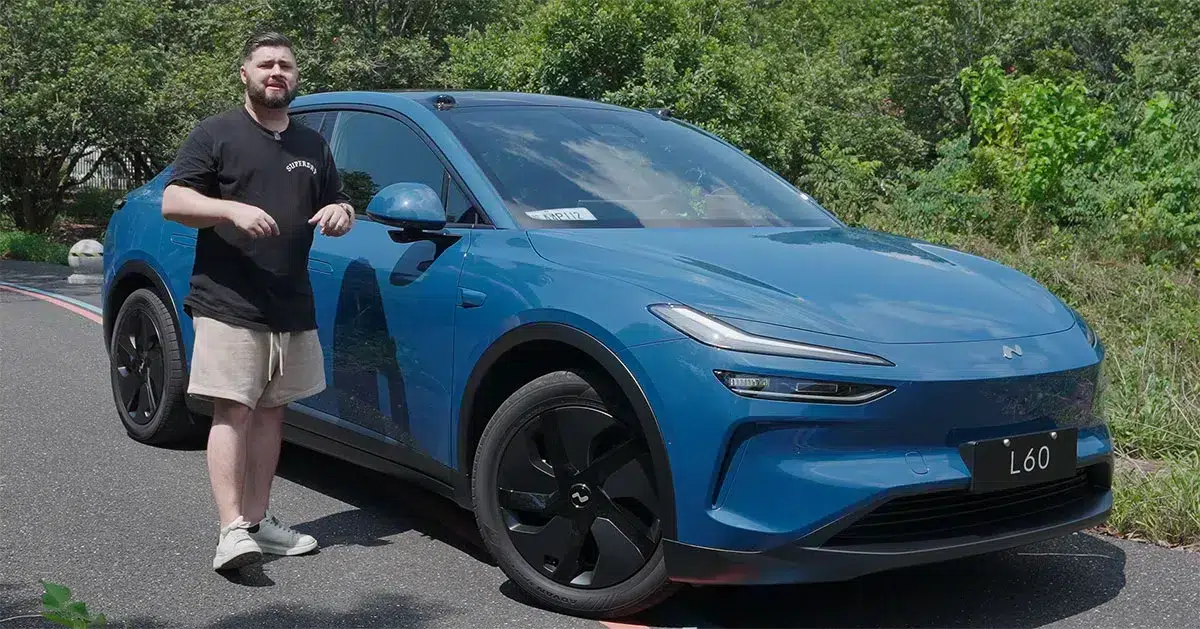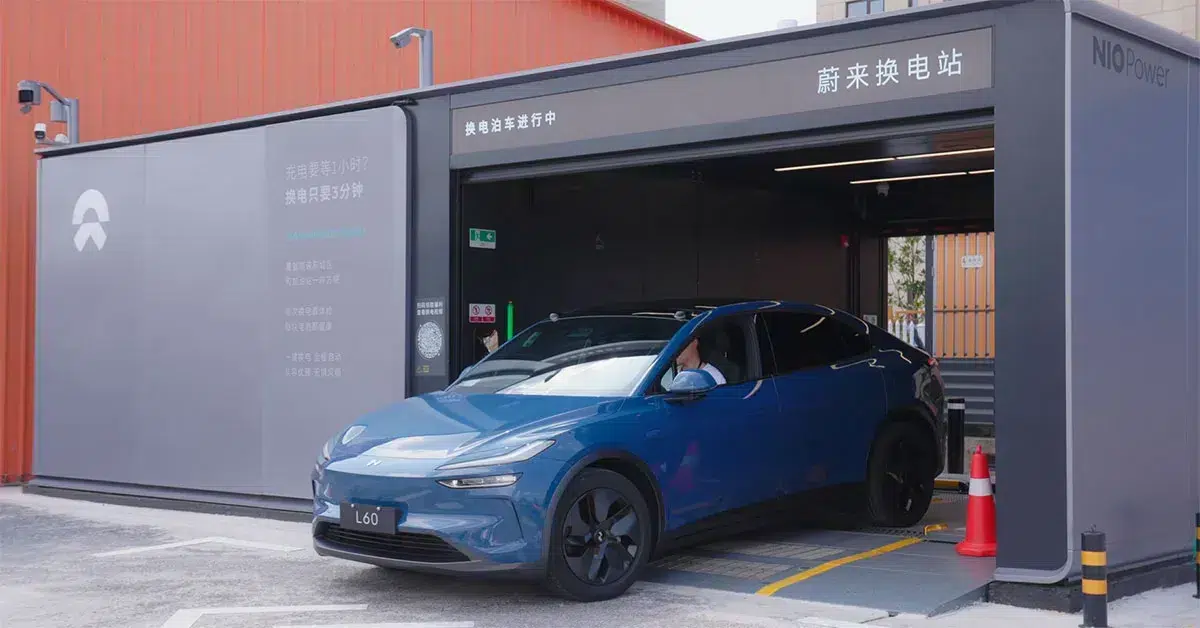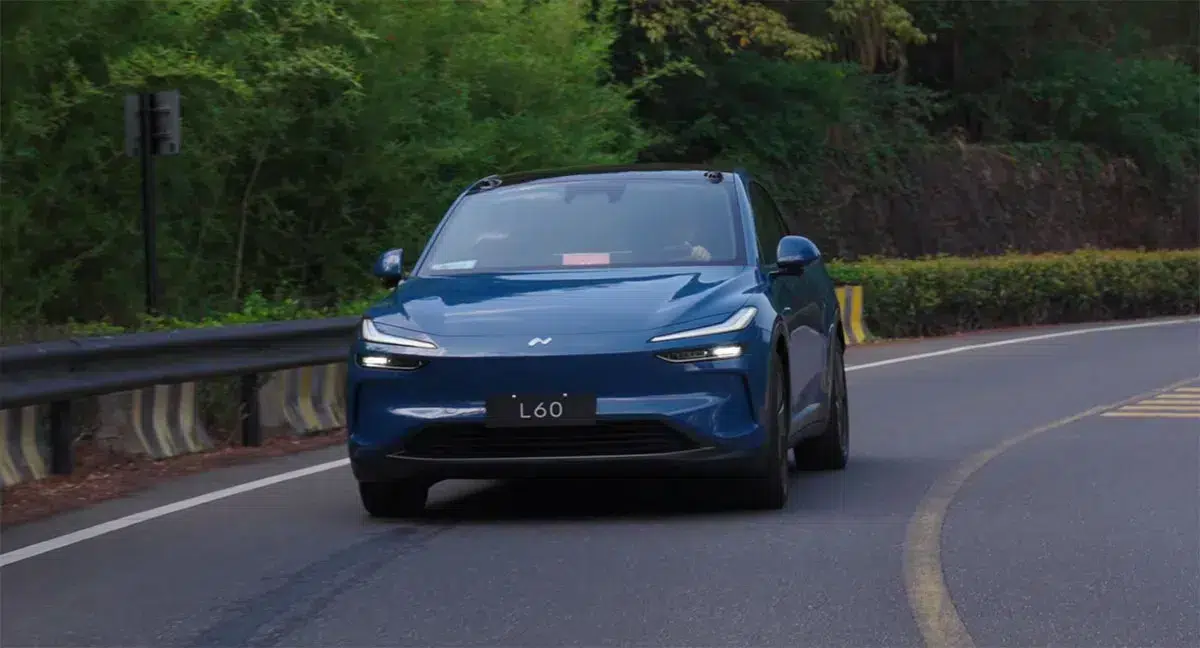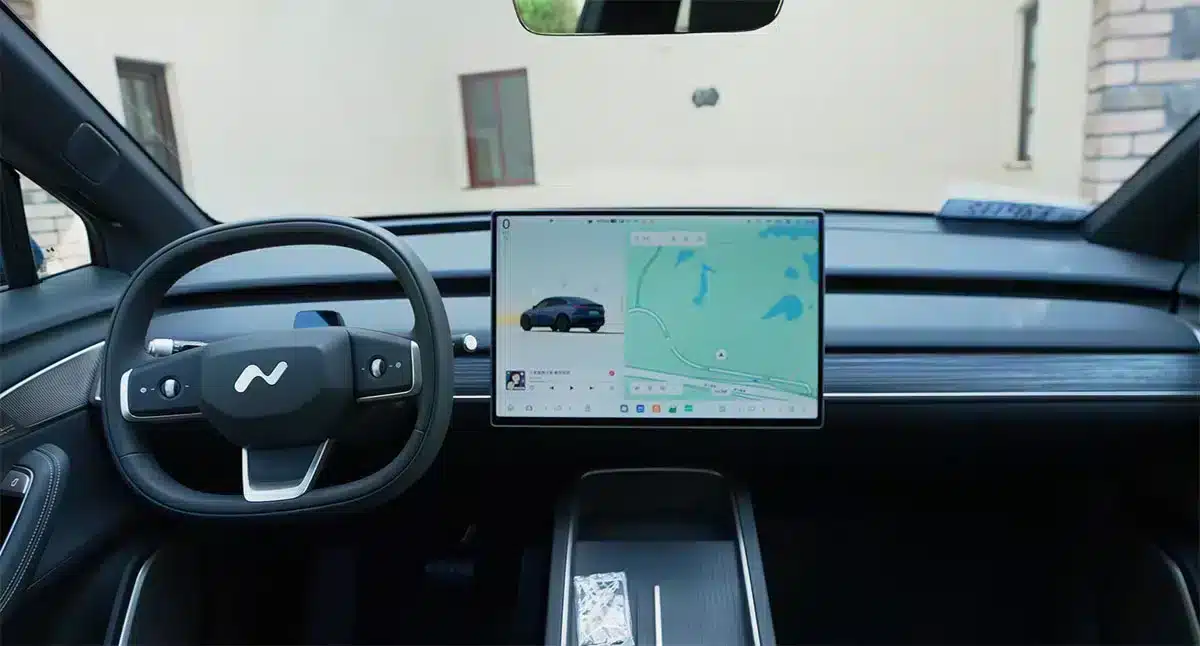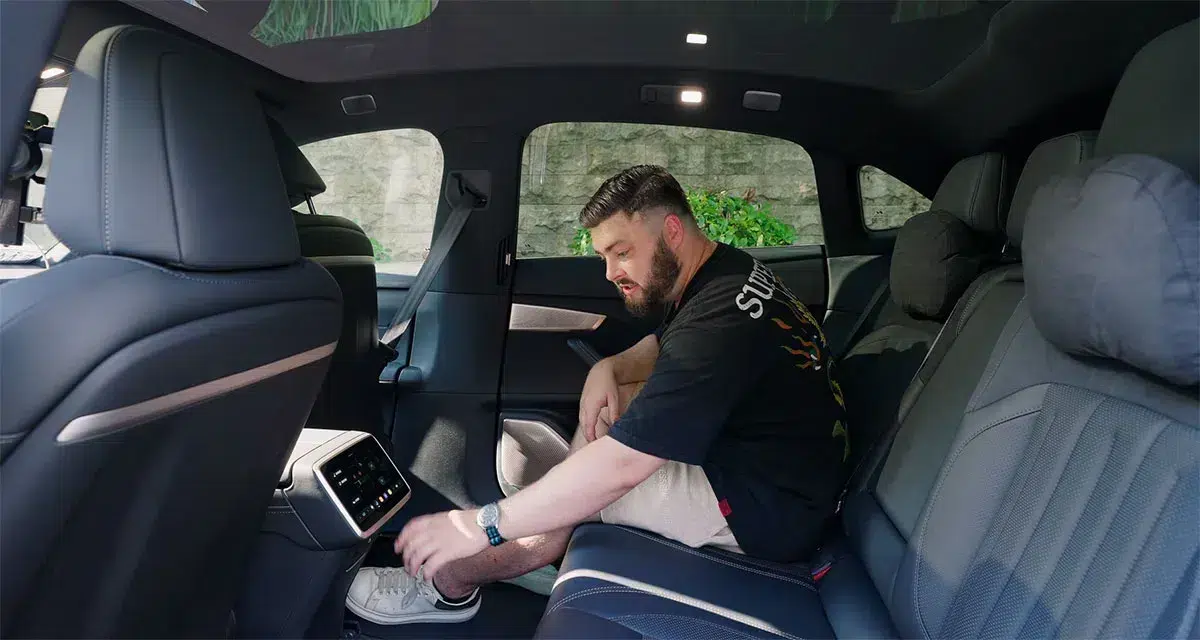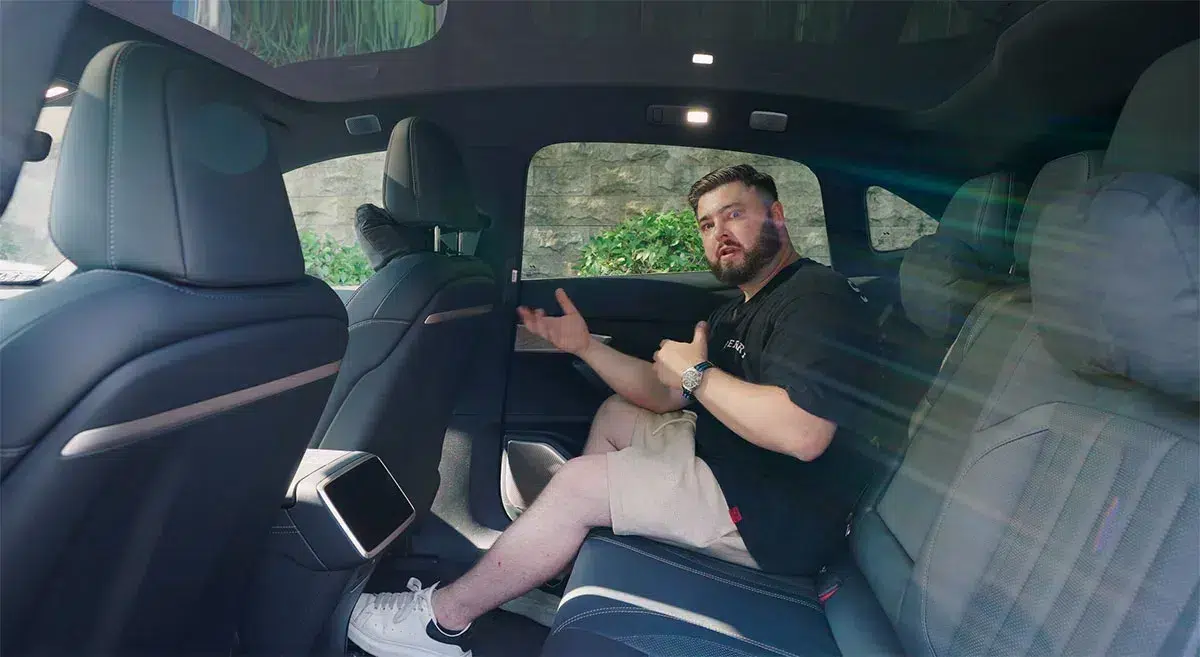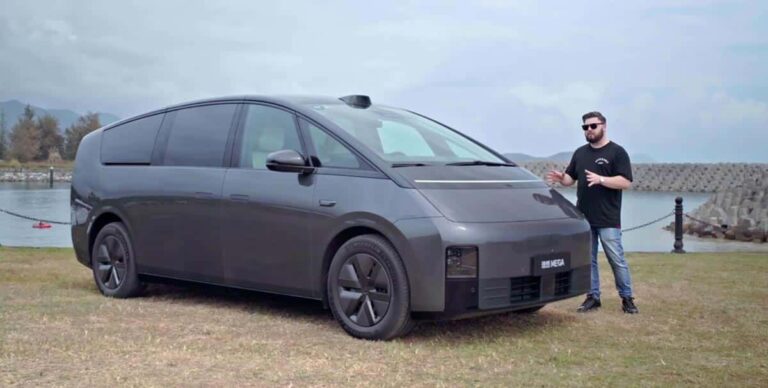While we await Tesla to very gently update the Model Y, Nio has put everything it can into the Onvo L60, while keeping the price reasonable.
This review is done by ChinaDriven, which creates content about Chinese EVs on YouTube & X. The article was written by the author and does not represent the views of CnEVPost.
Some predict the EV price war in China is coming to an end, but I think it’s just morphed a little. Instead of straight price cuts, 2024 has been the year when more OEMs are stuffing high-end features, before reserved for premium models, into more budget friendly EVs.
And Nio’s answer is, its new sub-brand Onvo. Their first model, the Onvo L60, was benchmarked against the sales king of EV SUVs, the Tesla Model Y. But Nio is actually debuting some high-tech features in its mainstream Onvo L60 before they even put it into a Nio branded EV!
Price
We won’t know the full pricing before the Onvo L60 has its official launch. We know the “pre-sale” price is 219,900 RMB.
Normally pre-sale prices are a little higher than starting prices as they offer options as standard. Onvo dropped some hints that those “extras” could come in the form of battery swapping incentives.
We know that the Onvo L60 will available with BaaS, Battery as a Service, which allows the owner to pay a fixed monthly rental price to lower initial purchase price.
The pricing for Onvo’s BaaS will also come at launch, but we can guess we might see up to 60,000 RMB for the smaller 60-kWh battery bringing the purchase price down to around 160,000 RMB. But that’s just speculation at this point.
Battery, Range, Charging
The two battery options for Onvo L60, a 60kWh and an 85kWh. Both are new LFP (Lithium Iron Phosphate) packs that are thinner than the current 75 &100-kWh NCM (Nickel Magnesium Cobalt) batteries used by Nio.
However, charging still remains an area where Nio and Onvo are still very average amongst competitors.
Onvo claims the 60-kWh battery can be charged 10-80 percent in 25 mins, while the larger 85-kWH is quicker at 20 mins. These times are more than acceptable, but are not near the leaders in charging speeds.
Of course many will argue this is irrelevant, because Onvo will be blessed with perhaps the biggest advantage Nio have. Battery Swapping.
The Onvo L60 will be able to take advantage of Nio’s battery swapping network, being able to swap batteries at 4th generation stations, and modified generation 3 stations. On launch, the L60 will have access to at least 1,000 swap stations throughout China.
Onvo also hasn't given a full run down of ranges for the L60. We know the base rear wheel drive with a 60-kWh battery has a claimed range of 555 km, and a consumption of just 12.1 kWh/100 km.
We also know that the same 60-kWh battery in the dual motor version won’t result in huge range loss, with Onvo claiming it falls short of the single motor’s range by just 30 km, for a total range of 525 km. Consumption for the dual motor is slightly higher at 12.7 kWh/100km.
For comparison a Tesla Model Y rear motor is 12.5 kWh/100 km, whilst the dual motor Long Range version is higher at 13.4k Wh/100 km.
When we drove the Onvo L60 they were still waiting for official verification of the 85-kWh range, but they said it should easily achieve over 700 km in both single and dual motor versions.
The whole platform under the Onvo L60 is a 900V architecture, with 900V batteries and motors. Technically the Onvo L60 is the first Nio product to ride on its new NT 3.0 platform, even before Nio’s big flagship, ET9, emerges.
Exterior
Our Onvo L60 review unit was in the fantastic Coastal Blue. By far my absolute favorite color for this car. Stunning.
The design language for the Onvo L60 is called “Way Up,” which is from the Chinese saying “蒸蒸日上,” meaning flourishing day by day.
Onvo says it’s a wish to their users. But cutting through the marketing, the Onvo L60 is a coupish SUV, designed with low drag and interior space in mind.
It’s not the most sensational hunk of metal to ever see the light of day, but it looks quite sleek, and definitively makes the Tesla Model Y look dated in comparison. The Onvo L60’s signature styling is probably its split headlight cluster, with boomerang like daytime running lights.
I’ll repeat what I said when I first saw pictures of the L60, it’s really good looking from the rear three quarter angle...but it also has a strong reminder of the BMW X4 back there.
Interior
There is no instrument panel, a new trend in China which I hope dies, but you do at least get a 13-inch heads up display. I can live with that. That HUD is very similar to Nio’s HUD, so while I appreciate it being there, it doesn’t feel like a full instrument panel replacement like a Li Auto HUD.
FINALLY! A Nio product with a horizontal screen, and boy does it feel big. it’s a 17.2-inch 3K touchscreen, and when most rivals have 15-16inch screens, the extra inch of real estate really does make an impression.
It’s using a snapdragon 8295P, and is powered by Coconut NT OS. The home screen layout will feel familiar to Tesla owners, but this is all based on SkyOS, built ground up for Nio’s smart EVs.
Once again, the Onvo L60 is the first full feature implementation of SkyOS, and I found it silky smooth and responsive. I also found it easy to navigate the menus, but they were very similar to the menu system in my Nio ET7, so that probably helped.
You get a 50W wireless phone charger, a 1,000W 18 speaker surround sound system with Dolby spatial audio, Heated and ventilated front seats with SPA massage function, and a four zone i voice assistant called “Little Happy.”
No Nomi-like head in the Onvo L60, but the voice assistant is using the same tech as Nomi, so functionality is very similar.
In the rear, you get electric reclining bench, plenty of leg, foot and head room, even though the L60 is a coupish SUV standing at only 1,616 mm tall. The roominess inside is thanks to the newer smaller motors and thinner batteries that have allowed better interior packaging.
The biggest highlight in the rear is the 8-inch screen at the rear of the center console, and although only 720p, due to its smallish size the picture looks sharp. You can use it to watch movies or control different car functions, like the rear heated seats, moving the front passenger seat out of the way, as well as access the A/C and media controls.
The interior has no leather, and we couldn’t get an answer if this will be an option or not. But the fake leather, named CareTex but Onvo, is supple, soft and won’t have you feeling you’re missing out without leather. There’s also a panoramic roof, nearly 2 square meters of glass, but there is no cover, so be warned when it’s sat out in the summer sun!
ADAS
OSD, Onvo Self Driving, is the branded name for Onvo’s ADAS suite. It’s a departure from Nio’s NAD in terms of sensors. There is no lidar, instead relying on a 4D milliwave radar.
The seven 8-megapixel cameras, and four 5-megapixel cameras are in line with Nio’s sensor suite. With roof mounted cameras just like a Nio, without the central Lidar.
Onvo say on launch the Onvo L60 will come with OSD City and Highway. How? They are leveraging the data from Nio and Nio users who are already using Nio NOP+ City and highway, giving them a running start.
However, OSD City wasn’t ready on the media drive, and my gut tells me it will probably be a little behind Nio’s NOP+.
The Onvo L60 also has auto parking solutions, 360 cameras with transparent chassis, and a basic level 2 LCC like Nio Pilot. Again, no word on subscription costs or exemptions for early buyers, but I expect there to be discounts for those buying at launch.
Driving
Two-tiered performance for the Onvo L60, neither on paper are neck snapping. But on road the single rear motor version seems to have more than enough power and acceleration.
The rear wheel drive has 240 kW, and sprints 0-100kph in 5.9s. The dual motor adds a second 100 kW motor on the front axle for a total of 340 kW, dropping that sprint to 4.6s. Family friendly acceleration.
There is no fancy suspension tech being brought over from Nio. No air suspension or continuous dampening control. Instead, the Onvo L60 is equipped with FSD suspension, similar to what you’ll find in the Tesla model Y, but it offers a more cushioned ride.
Combined with a McPherson strut up front and 5-link independent suspension in the rear, the Onvo L60 does a much better job riding the line between comfort and handling dynamics.
The Onvo L60 is a family car, and expectations of corner carving is not something to expect, but it will go around a corner decently, it’s not overly soft, there’s no egregious body roll.
It has more than enough power and handling to put a smile on your face on a twisty road, and then commute to work in the morning. It’s also got quite a tight turning circle which is always welcomed.
Conclusion
So, while we await Tesla to very gently update the Model Y, Nio has put everything it can into the Onvo L60, while keeping the price reasonable.
Nio is hoping this will catapult them to dizzying sales heights, and as a product, it’s got everything it needs.
So, I just have one question. If you can buy an Onvo L60, would you buy a Tesla, (wh)Y?

